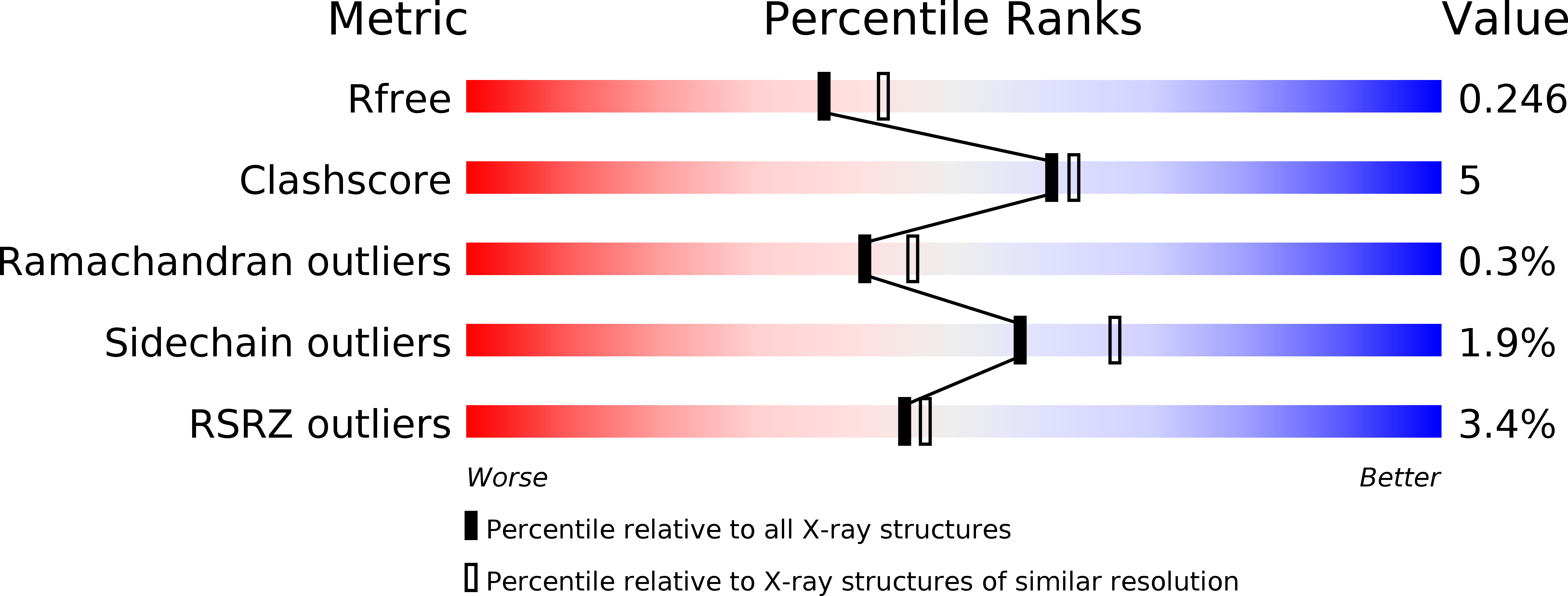Encoding of Promiscuity in an Aminoglycoside Acetyltransferase.
Kumar, P., Selvaraj, B., Serpersu, E.H., Cuneo, M.J.(2018) J Med Chem 61: 10218-10227
- PubMed: 30347146
- DOI: https://doi.org/10.1021/acs.jmedchem.8b01393
- Primary Citation of Related Structures:
6MB4, 6MB5, 6MB6, 6MB7, 6MB8, 6MB9 - PubMed Abstract:
Aminoglycoside antibiotics are a large family of antibiotics that can be divided into two distinct classes on the basis of the substitution pattern of the central deoxystreptamine ring. Although aminoglycosides are chemically, structurally, and topologically diverse, some aminoglycoside-modifying enzymes (AGMEs) are able to inactivate as many as 15 aminoglycosides from the two main classes, the kanamycin- and neomycin-based antibiotics. Here, we present the crystal structure of a promiscuous AGME, aminoglycoside- N3-acetyltransferase-IIIb (AAC-IIIb), in the apo form, in binary drug (sisomicin, neomycin, and paromomycin) and coenzyme A (CoASH) complexes, and in the ternary neomycin-CoASH complex. These data provide a structural framework for interpretation of the thermodynamics of enzyme-ligand interactions and the role of solvent in the recognition of ligands. In combination with the recent structure of an AGME that does not have broad substrate specificity, these structures allow for the direct determination of how antibiotic promiscuity is encoded in some AGMEs.
Organizational Affiliation:
Graduate School of Genome Science and Technology , The University of Tennessee and Oak Ridge National Laboratory , 1414 West Cumberland Avenue , Knoxville , Tennessee 37996 , United States.
















